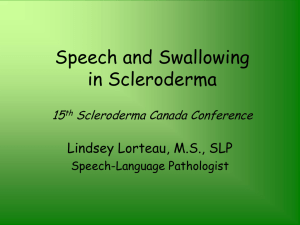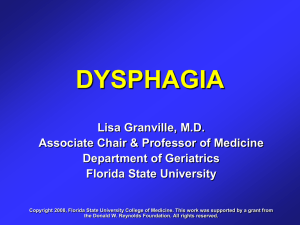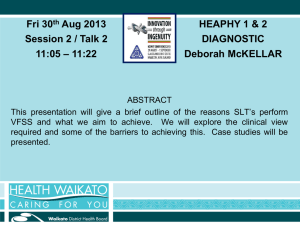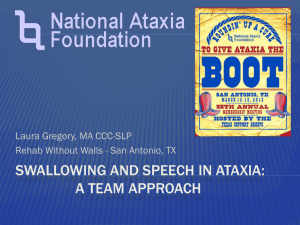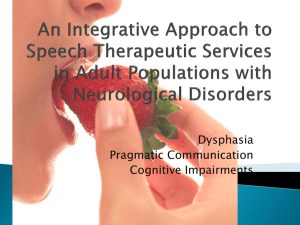What is a videofluoroscopy (VFS)
advertisement
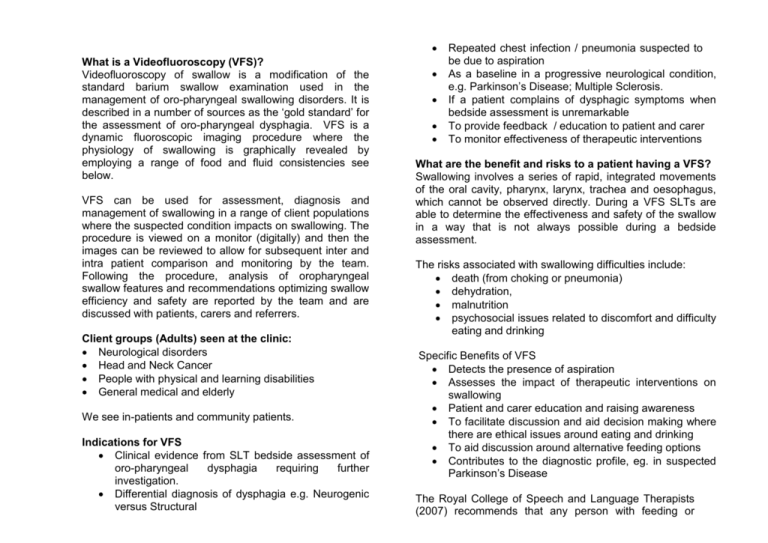
What is a Videofluoroscopy (VFS)? Videofluoroscopy of swallow is a modification of the standard barium swallow examination used in the management of oro-pharyngeal swallowing disorders. It is described in a number of sources as the ‘gold standard’ for the assessment of oro-pharyngeal dysphagia. VFS is a dynamic fluoroscopic imaging procedure where the physiology of swallowing is graphically revealed by employing a range of food and fluid consistencies see below. VFS can be used for assessment, diagnosis and management of swallowing in a range of client populations where the suspected condition impacts on swallowing. The procedure is viewed on a monitor (digitally) and then the images can be reviewed to allow for subsequent inter and intra patient comparison and monitoring by the team. Following the procedure, analysis of oropharyngeal swallow features and recommendations optimizing swallow efficiency and safety are reported by the team and are discussed with patients, carers and referrers. Client groups (Adults) seen at the clinic: Neurological disorders Head and Neck Cancer People with physical and learning disabilities General medical and elderly We see in-patients and community patients. Indications for VFS Clinical evidence from SLT bedside assessment of oro-pharyngeal dysphagia requiring further investigation. Differential diagnosis of dysphagia e.g. Neurogenic versus Structural Repeated chest infection / pneumonia suspected to be due to aspiration As a baseline in a progressive neurological condition, e.g. Parkinson’s Disease; Multiple Sclerosis. If a patient complains of dysphagic symptoms when bedside assessment is unremarkable To provide feedback / education to patient and carer To monitor effectiveness of therapeutic interventions What are the benefit and risks to a patient having a VFS? Swallowing involves a series of rapid, integrated movements of the oral cavity, pharynx, larynx, trachea and oesophagus, which cannot be observed directly. During a VFS SLTs are able to determine the effectiveness and safety of the swallow in a way that is not always possible during a bedside assessment. The risks associated with swallowing difficulties include: death (from choking or pneumonia) dehydration, malnutrition psychosocial issues related to discomfort and difficulty eating and drinking Specific Benefits of VFS Detects the presence of aspiration Assesses the impact of therapeutic interventions on swallowing Patient and carer education and raising awareness To facilitate discussion and aid decision making where there are ethical issues around eating and drinking To aid discussion around alternative feeding options Contributes to the diagnostic profile, eg. in suspected Parkinson’s Disease The Royal College of Speech and Language Therapists (2007) recommends that any person with feeding or swallowing difficulties have equal access to a timely, responsive and quality instrumental evaluation of swallowing as part of a dysphagia care pathway. This is reflected in current government policies on needs-led services. Specific Risks of VFS Low dose radiation Aspiration of small quantities of barium. What do we offer at Queen Mary’s Hospital? The SLT-led clinic at QMH is an innovative, effective and efficient service. We are using new equipment and technology, for instance, recording digitally. We are well staffed, by specialist experienced SLTs and have a good working relationship with both with the radiology and radiography teams at QMH. An experienced Consultant Radiologist views and reports on all our assessments. We consider it best practice for the referring SLT to accompany patients to our clinic and also are happy to accommodate carers / relatives and other professionals who may wish to observe. This ensures that any recommendations we make are carried over. Following the assessment, we write a comprehensive report in collaboration with the referring SLT, which outlines the findings and gives clear recommendations for future management. We also provide the digital images on CD Rom if requested. SLT primarily refer patients to the clinic after medical authorisation. We always make telephone contact to the referring SLT to discuss the referral and to ensure that it is clinically appropriate. Speech & Language Therapy-Led Videofluoroscopy Clinic at Queen Mary’s Hospital, Roehampton

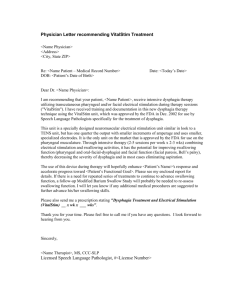
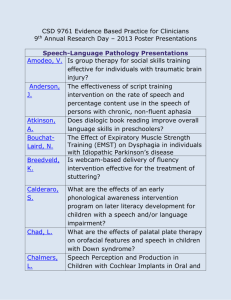
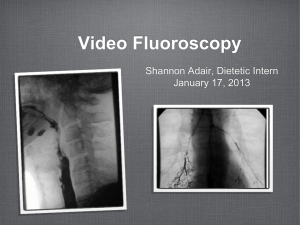
![Dysphagia Webinar, May, 2013[2]](http://s2.studylib.net/store/data/005382560_1-ff5244e89815170fde8b3f907df8b381-300x300.png)

